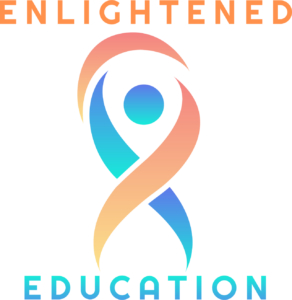In today’s rapidly evolving world, it has become crucial to transform traditional learning experiences and enhance education through dynamic curriculum and instruction. This blog post explores the benefits of embracing dynamic approaches in education and how they can revolutionize the way students learn and engage with content.
I. The Role of Curriculum and Instruction in Education
Curriculum and instruction are the backbone of any educational system. They define what students learn and how they are taught. However, traditional approaches often limit students’ potential by relying on rigid structures and outdated methodologies. By reimagining curriculum and instruction, we can create a more inclusive, engaging, and effective learning environment.
II. Understanding Dynamic Curriculum and Instruction
Dynamic curriculum and instruction involve flexible, student-centered approaches that adapt to the needs and interests of learners. It encourages active participation, critical thinking, and creativity. This approach breaks away from the one-size-fits-all model, empowering students to take ownership of their learning journey.
III. Advantages of Dynamic Curriculum and Instruction
a. Individualized learning experiences: Dynamic curriculum and instruction cater to the unique strengths, interests, and learning styles of each student. By personalizing education, it fosters greater engagement and a deeper understanding of the subject matter.
b. Promoting student autonomy and ownership: Dynamic approaches empower students to become active participants in their education. They encourage self-direction, decision-making, and problem-solving skills, preparing students for success in the real world.
c. Encouraging creativity and innovation: By embracing dynamic curriculum and instruction, students are given the freedom to explore and express their creativity. This cultivates an environment that nurtures innovation, allowing students to develop skills that are essential in today’s rapidly changing job market.
d. Cultivating problem-solving and collaboration skills: Dynamic curriculum and instruction emphasize hands-on, experiential learning. It encourages students to work collaboratively, fostering effective communication, teamwork, and critical thinking abilities.
IV. Strategies for Implementing Dynamic Curriculum and Instruction
a. Professional development and training for educators: Teachers play a pivotal role in implementing dynamic approaches. Providing them with training and professional development opportunities equips them with the necessary skills and knowledge to create dynamic learning environments.
b. Incorporating technology and digital resources: Technology can facilitate dynamic curriculum and instruction by providing access to a wealth of educational resources, interactive tools, and virtual platforms. Integrating technology enables students to engage with content in innovative and interactive ways.
c. Project-based learning and experiential activities: Dynamic curriculum and instruction emphasize project-based learning, where students tackle real-world problems and engage in hands-on activities. This approach promotes active learning, critical thinking, and practical application of knowledge.
d. Assessment and feedback in a dynamic learning environment: Assessments in dynamic curriculum and instruction should focus on measuring student growth, understanding, and application of knowledge rather than relying solely on standardized tests. Providing timely and constructive feedback helps students understand their progress and areas for improvement.
V. Overcoming Challenges and Addressing Concerns
a. Resistance to change from educators and stakeholders: Introducing dynamic curriculum and instruction may face resistance from educators who are comfortable with traditional methods. Effective communication, collaboration, and sharing success stories can help overcome this resistance.
b. Balancing standardized testing and curriculum flexibility: Integrating dynamic approaches while meeting standardized testing requirements can be a challenge. Striking a balance between accountability and flexibility is crucial to ensure holistic education.
c. Addressing resource constraints and infrastructure needs: Implementing dynamic curriculum and instruction may require additional resources, such as technology, training, and updated materials. Collaborating with stakeholders, seeking grants, and leveraging existing resources can help address these constraints.
VI. Case Studies and Success Stories
Highlighting real-world examples of schools or districts that have successfully transformed learning experiences through dynamic curriculum and instruction can inspire educators and stakeholders. Sharing measurable outcomes and student achievements demonstrates the positive impact of these approaches.
VII. The Future of Education: Embracing Dynamic Curriculum and Instruction
The world is evolving rapidly, and education needs to adapt accordingly. Embracing dynamic curriculum and instruction is crucial to equip students with the skills they need to thrive in an ever-changing society. It requires continuous improvement, collaboration between educators, policymakers, and stakeholders, and a shared commitment to innovation and progress.
Takeaway
Dynamic curriculum and instruction offer immense potential for transforming learning experiences and enhancing education. By embracing these approaches, we can create a student-centered environment that fosters engagement, critical thinking, creativity, and collaboration. It is up to educators, policymakers, and stakeholders to drive this change and unlock the full potential of our education system. Let’s embark on this transformative journey and shape a brighter future for our learners.

